骨质疏松症被定义为一种全身性骨骼疾病,其特征是骨量低和骨组织微观结构恶化,从而增加骨脆性和骨折易感性[1]。骨质疏松症的基本发病机制是骨形成和吸收的失调。去卵巢小鼠是公认的人类绝经后骨质疏松症(PMOP)的体内模型。骨密度(BMD)测量、显微CT分析和组织形态计量学分析用于评估OVX小鼠[2,3]。手术后采集骨骼并进行测试。百奥赛图在C57BL/6小鼠中建立了稳定的OVX诱导的骨质疏松症模型方案,可用于骨质疏松症的临床前研究和药效学评价。
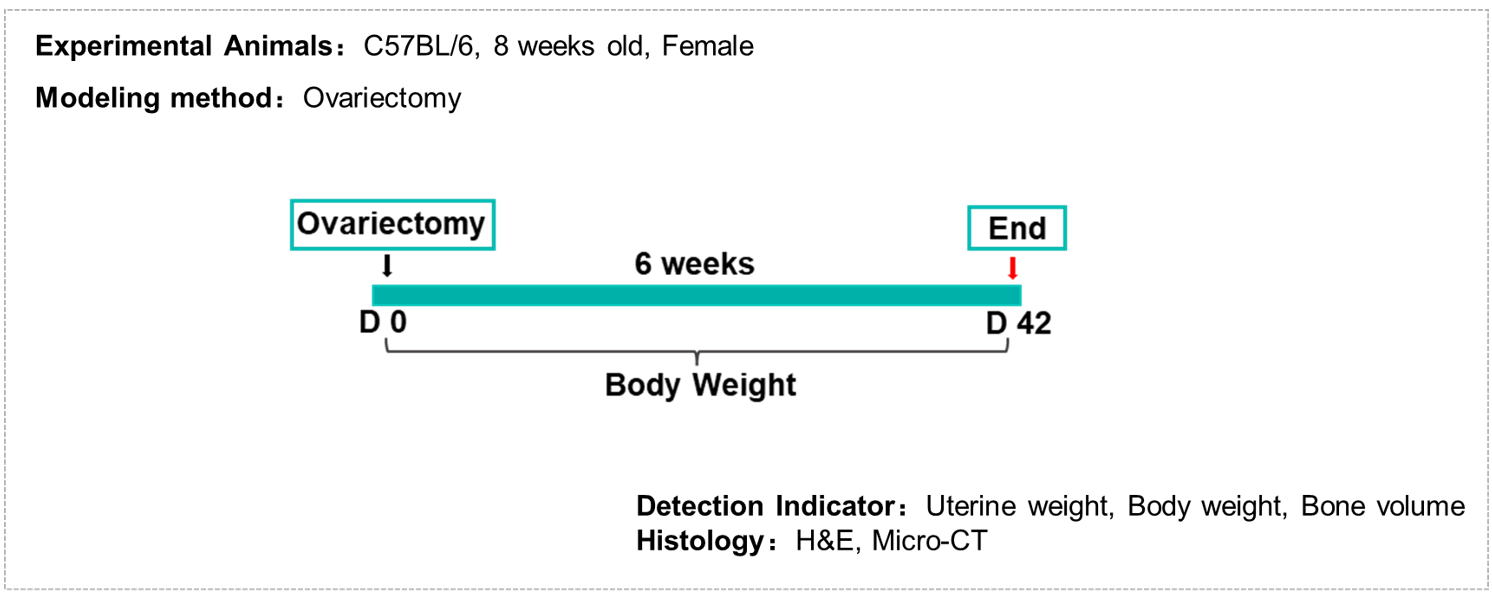
OVX诱导的小鼠体重和子宫重量减轻
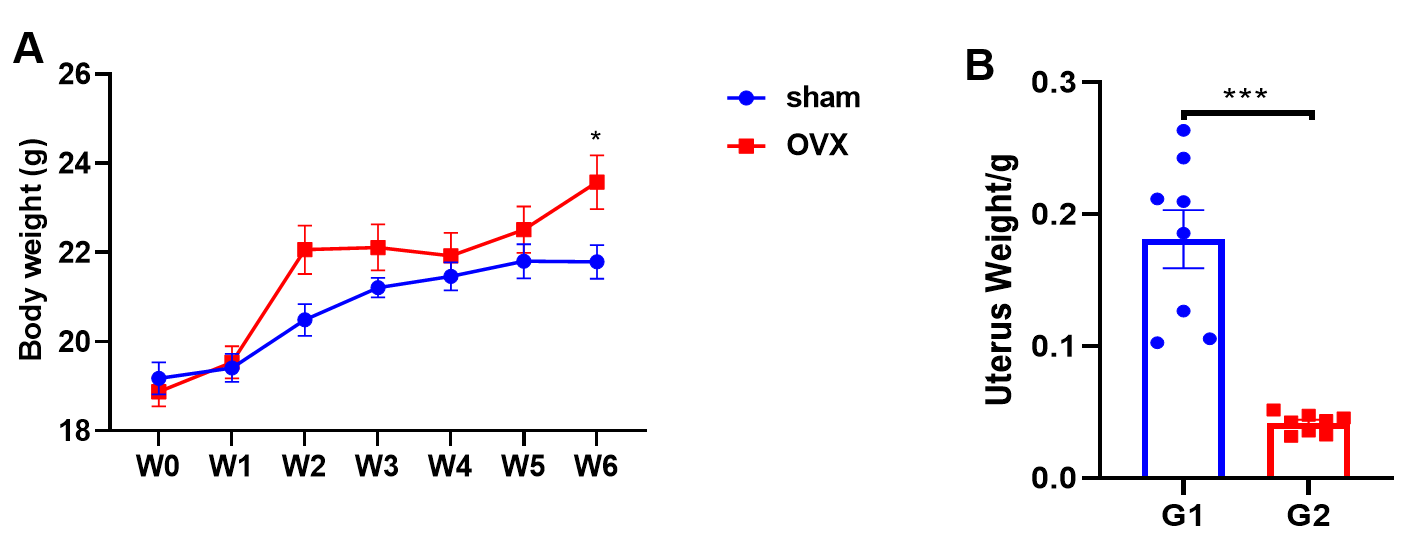
OVX诱导小鼠骨质流失(CT)
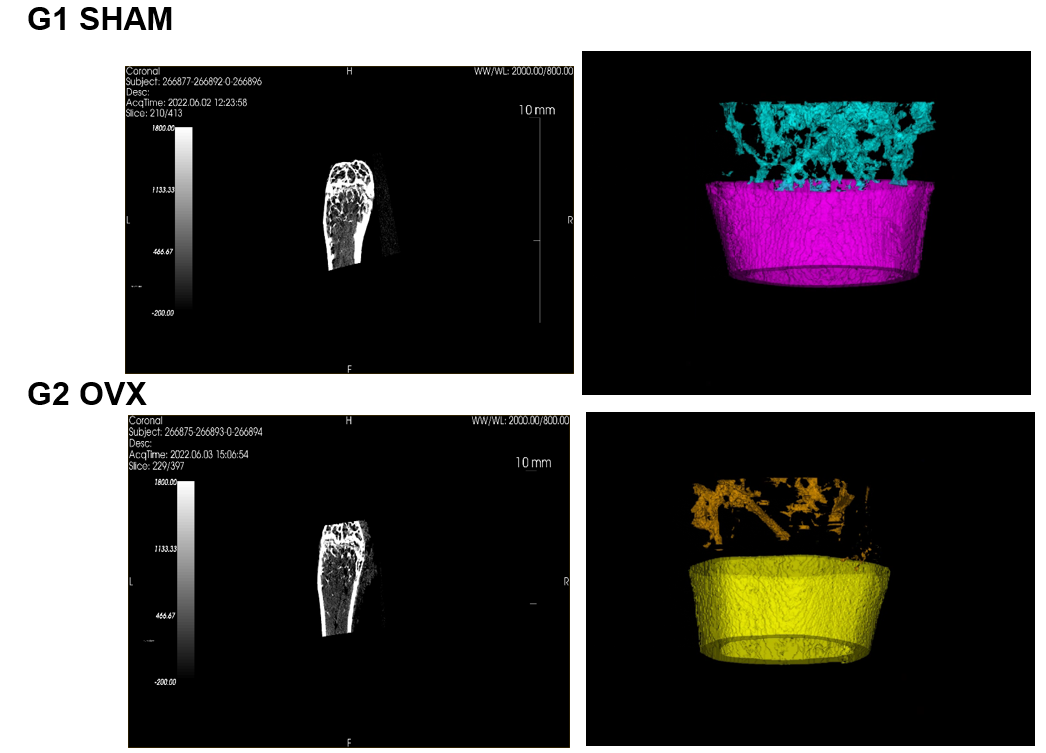
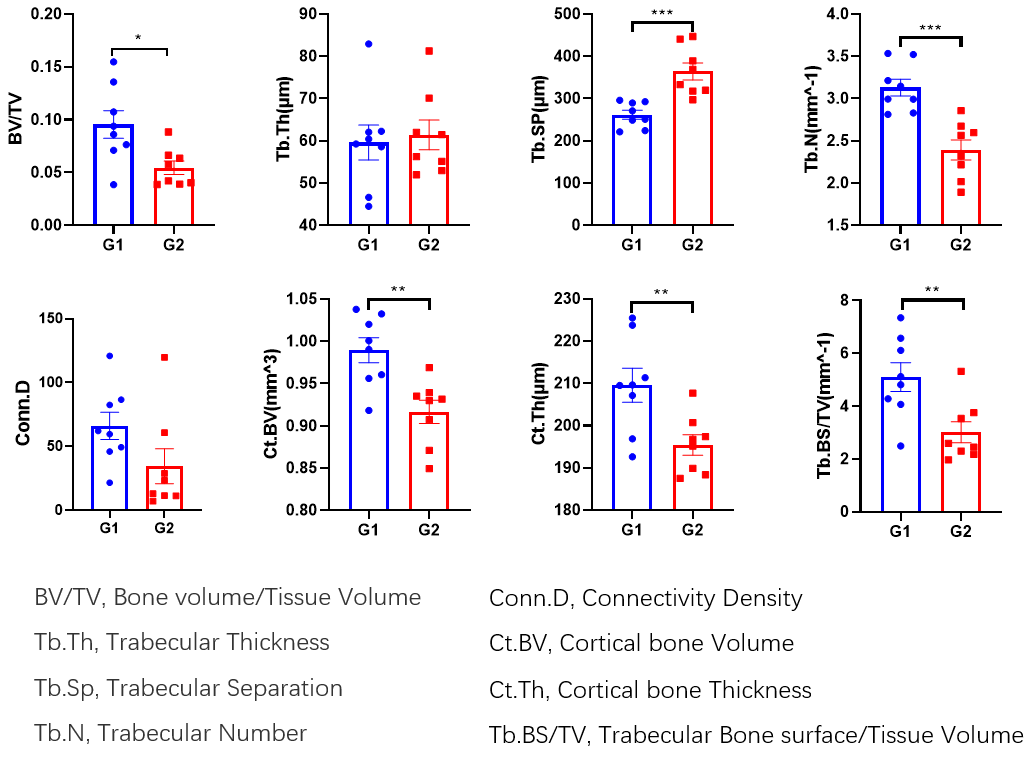
卵巢切除术诱发骨质疏松。C57BL/6小鼠在第0天行卵巢切除术,术后6周,取骨和子宫进行检测。每天记录体重,卵巢切除术导致小鼠骨质流失。值表示为平均值±SEM。n=8, T检验,*p< 0.05,**p<0.01。
OVX诱导小鼠骨质流失(H&E)
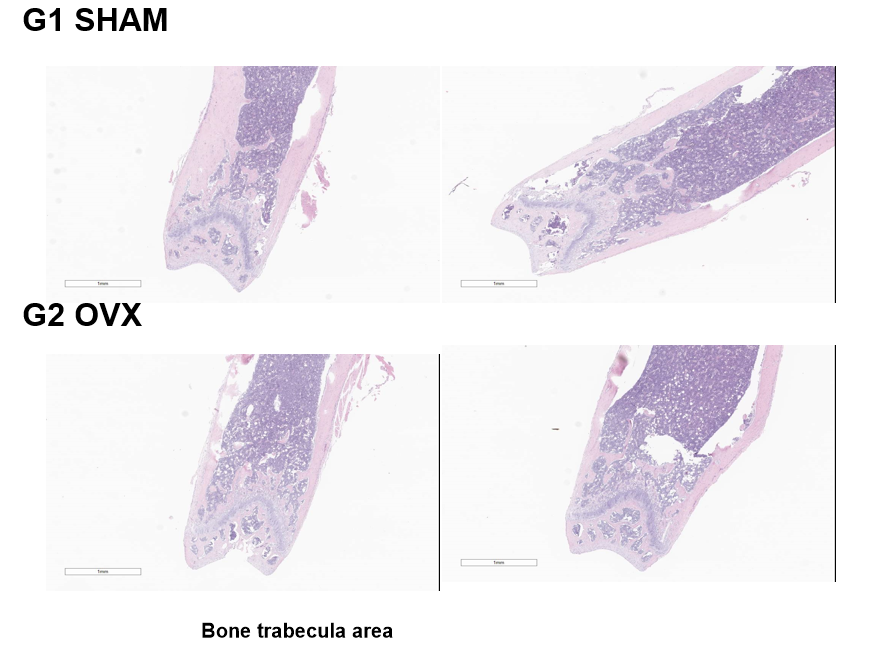

卵巢切除术所致骨质疏松症的病理分析。卵巢切除6周后,接受OVX手术的小鼠骨小梁面积减少。数值表示为平均值±SEM。n=8, t检验,*p< 0.05, **p<0.01。

参考文献
1. Eastell R, O‘Neill TW , Hofbauer LC et al. Postmenopausal osteoporosis. Nat Rev Dis Primers. 2016, 2:16069.
2. Wang HC, Zhou KF, Xiao FZ et al. Identification of circRNA-associated ceRNA network in BMSCs of OVX models for postmenopausal osteoporosis. Sci Rep. 2020, 10(1):10896.
3. Chen K, Qiu PC, Yuan Y et al. Pseurotin A Inhibits Osteoclastogenesis and Prevents Ovariectomized-Induced Bone Loss by Suppressing Reactive Oxygen Species. Theranostics. 2019, 9(6):1634-1650.
 苏公网安备:32068402320845号
网站建设:北京分形科技
苏公网安备:32068402320845号
网站建设:北京分形科技






 010-56967680
010-56967680 info@bbctg.com.cn
info@bbctg.com.cn